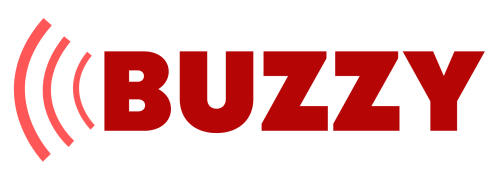The Ultimate Guide: How Much Should You Put Down on Your New Home?
Buying your dream home can be an exciting and scary process, especially when determining the right down payment. A down payment is an initial payment made towards the purchase of a property, and it's essential to get it right to ensure you don't miss out on your dream home.

Understanding Down Payments
When purchasing a home, the buyer is required to make an initial payment known as a down payment, which is a percentage of the total cost of the property and must be paid in advance. The down payment's size affects the mortgage loan and monthly payments, with larger down payments resulting in smaller loans, lower monthly payments, and less interest paid over time.
The amount of down payment required varies depending on the type of mortgage loan and lender's requirements; most often, it can range from 3-5% but can be as high as 20%. Government-backed programs such as FHA loans may require as little as 3.5% for the initial down payment.
Therefore, when deciding on a down payment amount, you must carefully consider your current financial and housing market conditions.
Factors to Consider When Deciding on a Down Payment
Determining the right down payment amount for a home purchase is not a one-size-fits-all approach. Here are some essential considerations to take into account when determining the suitable amount for a down payment:
1. Personal Financial Situation
Your financial situation is one of the most important factors to consider when determining the right down payment. This includes your income, debts, and credit score. It's important to clearly understand your financial situation before making any decisions regarding down payment.
Generally, it's recommended to have a down payment of at least 20% of the purchase price, but this may not be feasible for everyone. Working with a lender to determine what amount is right for your situation is essential.
2. Location of the Property
The location of the property can also impact the down payment amount. For example, a larger down payment may be required if the property is in a high-cost area. This is because lenders often have stricter requirements for properties located in areas with higher home values.
3. Type of Property
The type of property you're purchasing can also impact the down payment amount. For instance, if you're buying a second home or investment property, the down payment requirement may be higher than purchasing a primary residence.
4. Market Trends
The current market conditions can also impact the down payment amount. In a seller's market where there is high demand and low inventory, a larger down payment may be necessary to make your offer more attractive to the seller.
5. Interest Rates
Interest rates also play a role in determining the right down payment amount. A higher down payment can lead to a lower interest rate and potentially lower monthly mortgage payments.
Calculating the Right Down Payment
Once you've considered the factors that impact the right down payment amount for your home purchase, it's crucial to understand how to calculate the appropriate down payment. Here are some guidelines and terms to know:
1. Guidelines for calculating the down payment
Although there are no strict rules for computing the down payment, a general recommendation is to target a minimum of 20% of the property's buying price. This can help you avoid private mortgage insurance (PMI) and may result in a lower interest rate. However, it's essential to consider your financial situation and work with a lender to determine the right amount for you.
2. Understanding the loan-to-value (LTV) ratio
The Loan-to-Value (LTV) ratio plays a major role when calculating the amount for the down payment. It is calculated by dividing the mortgage loan amount by the home's appraised value. For example, if the home is appraised at $500,000 and the loan amount is $400,000, the LTV ratio is 80%. Generally, lenders require a maximum LTV ratio of 80% to avoid PMI, but some loan programs may allow for a higher ratio.
3. Factors that affect the loan-to-value ratio
Several factors can impact the LTV ratio and, in turn, the down payment amount. These include:
- The appraised value of the home: The higher the appraised value, the lower the LTV ratio and potential down payment requirement.
- The loan amount: A larger loan amount will lead to a higher LTV ratio and, in turn, may require a higher down payment.
- The type of loan: Different loan programs have different LTV ratio requirements. For example, FHA loans may allow for a higher LTV ratio but require mortgage insurance premiums (MIP).
Understanding these terms and working with a lender can help determine your home purchase's appropriate down payment amount.
Exploring Down Payment Assistance Options
For many prospective homebuyers, coming up with a down payment can be a significant barrier to homeownership. Fortunately, several down payment assistance programs are available to help make homeownership more accessible. Here's what you need to know about down payment assistance programs:
- Government programs: These programs are often offered at the state or local level and may provide grants, forgivable loans, or low-interest loans to qualified borrowers.
- Nonprofit organizations: Some nonprofits offer down payment assistance programs to help low and moderate-income borrowers afford a home.
- Employer programs: Some employers offer down payment assistance programs as a perk for employees.
Using down payment assistance has advantages and disadvantages. Here are some potential benefits:
- Access to homeownership: Down payment assistance can make homeownership more accessible for borrowers who may not have been able to afford a down payment otherwise.
- Financial flexibility: Down payment assistance can free up cash for other expenses, such as home repairs or furnishings.
- Lower upfront costs: By receiving down payment assistance, borrowers can reduce their upfront costs and potentially qualify for a lower interest rate.
However, there are also possible disadvantages to using down payment assistance, such as:
- Limited availability: Down payment assistance programs may have limited funding or be restricted to certain areas, making them less accessible to some borrowers.
- Potential fees: Some down payment assistance programs may charge fees, which can add to the overall cost of the loan.
- Restrictions on home purchases: Some down payment assistance programs may restrict the type of home purchased or limit the property's resale value.
Down payment assistance programs can be an excellent option for those looking to buy a home but who may lack the necessary funds. As such, it's important to research available programs and understand the advantages and disadvantages before choosing.
Your Dream Home is Within Reach
Determining the right down payment amount for your dream home is critical to ensure affordability and making the best decision. Researching down payment assistance programs can be a valuable resource in helping you reach your homeownership goals. With enough planning and research, owning a home can become a reality—down payment assistance programs make this path more attainable.







